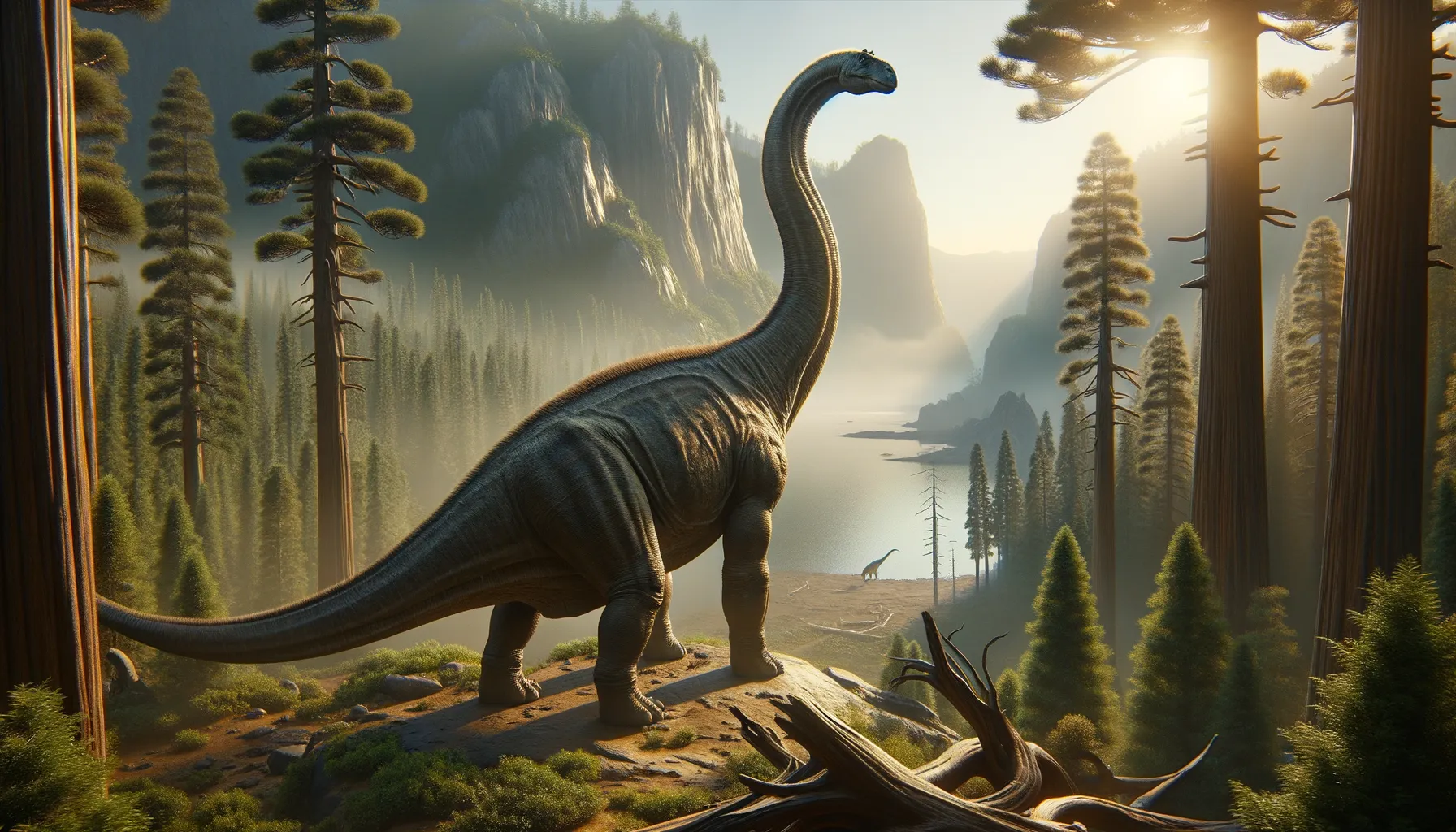
Apatosaurus
The gentle giant of the Jurassic age.
Period
Jurassic
Length
Up to 75 feet long.
Height
Approximately 15 feet at the hips.
Weight
About 20 to 30 tons.
Apatosaurus was a gigantic herbivorous dinosaur that roamed the Earth during the late Jurassic period. Known for its long neck and whip-like tail, it belonged to the sauropod group, characterized by their enormous size and long limbs. Despite its massive weight, the Apatosaurus was a gentle giant, spending much of its time grazing on high vegetation. Fossils of this remarkable creature reveal much about its life and behavior.
Diet
The Apatosaurus was a herbivore, feeding primarily on plants. It likely consumed large amounts of foliage, such as ferns and conifer leaves, to sustain its massive size. Due to its long neck, it could reach vegetation that was high off the ground.
Hunting
Being a herbivore, the Apatosaurus did not hunt for food. Instead, it foraged for plant material, which it could access easily due to its long neck and significant reach.
Environmental challenges
The Apatosaurus faced various environmental challenges, including competition for food resources with other herbivorous dinosaurs. Water availability would have been crucial for such large animals, especially during droughts. Predators like Allosaurus could have threatened young and vulnerable individuals, requiring the herd to protect them. Occasionally, changes in climate and vegetation could impact their grazing patterns.
Speed
Slow-moving due to its massive size.
Lifespan
Estimated to be around 70 to 100 years.
First discovery
Discovered in 1877 by Othniel Charles Marsh.
Fun Facts
- Apatosaurus is also known as the 'deceptive lizard,' a name given due to earlier confusion with other similar dinosaurs.
- This giant dinosaur lived about 150 million years ago during the Late Jurassic period.
- Apatosaurus could grow up to 75 feet long, making it one of the largest dinosaurs.
- Despite its massive size, Apatosaurus was a gentle giant and primarily ate plants.
- It had a long neck that helped it reach high vegetation and a long tail that it might have used for balance or defense.
- Apatosaurus' bones were originally discovered in the western United States in the late 1800s.
- Scientists believe that Apatosaurus likely moved in herds for protection against predators.
Growth and Development
Apatosaurus grew rapidly in its early years to reduce juvenile vulnerability to predators. As they matured, their size provided increased protection from predation. Growth rates and patterns were likely influenced by environmental factors, such as food availability and climate. They showed evidence of having a high metabolic rate similar to modern-day birds and reptiles.
Habitat
Apatosaurus lived in floodplain environments with abundant plant life to sustain its massive diet. These regions were characterized by lush forests and wetlands, providing ample food and water. Their habitats were likely along riverbanks and large inland basins which facilitated their herding behavior. Apatosaurus utilized its surrounding foliage for both cover and nutrition.
Interaction with other species
Apatosaurus shared its environment with various other dinosaur species, including predators like Allosaurus and Ceratosaurus. The presence of these predators meant that Apatosaurus herds had to remain vigilant, especially concerning their young. They also coexisted with other herbivorous species, which could lead to competition for food resources. Interference competition was less extreme due to their unique ability to reach higher vegetation that others could not.
Natural lifespan
Apatosaurus had a natural lifespan estimated at around 70 to 100 years.
Reproduction
Apatosaurus likely reproduced by laying eggs, similar to modern reptiles. Nesting sites were probably communal, with multiple females laying eggs in a shared area for increased survival chances. Young dinosaurs hatched relatively underdeveloped and grew rapidly to improve their chances of survival. Parental care might have been minimal after hatching, as evidenced by the high number of eggs and young expected in each clutch.
Social behaviour
Apatosaurus is believed to have lived in herds, which would offer protection against predators. Herding behavior also ensured better access to food sources while reducing competitive pressures within the group. Social structures could have involved complex communication through vocalizations and body language. Their herd dynamics might have included leadership roles, particularly among the older and more experienced members.
Fossil locations
Fossils of Apatosaurus have primarily been found in the Morrison Formation in North America. Notable states with Apatosaurus fossils include Colorado, Utah, Wyoming, and Oklahoma. These fossils have provided significant insight into the lives and environments of late Jurassic sauropods. Ongoing excavations continue to unearth new specimens, adding to our understanding of this iconic dinosaur.
